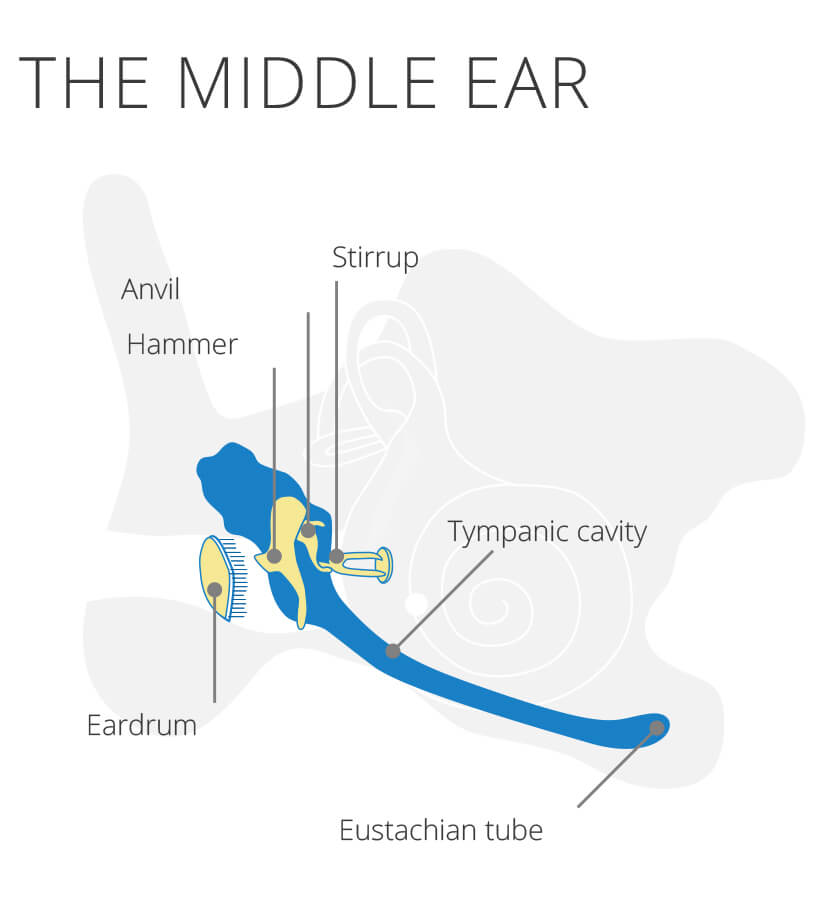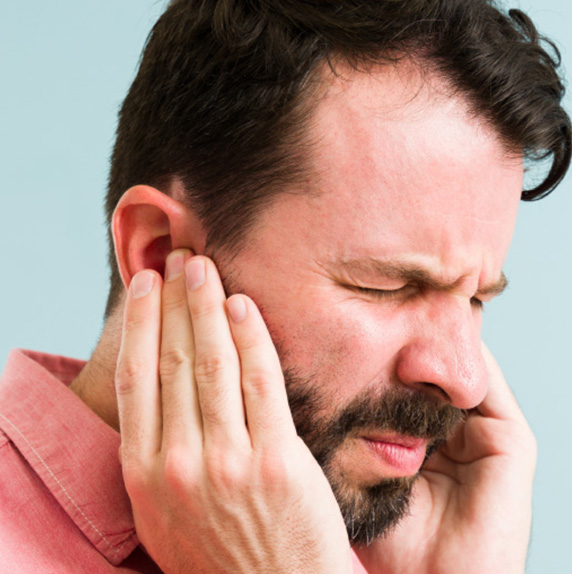
Smart hearing aids from hear.com - world's leading hearing care provider
Hole in the eardrum
The eardrum is a thin membrane that separates the inner ear from the outer part of the ear, so that protection against germs is guaranteed. At the same time, it is essential for the transmission of external sound waves and thus has a key role in the hearing process. If there is a hole in this sensitive membrane, doctors speak of a so-called eardrum perforation.
Here is some important information to know should you have a hole in your eardrum. These include the causes, the possible symptoms, how the doctor makes a diagnosis, and the treatment options.
Table of Contents
- Symptoms
- Diagnosis
- Possible causes for a hole in the ear drum
- Therapy
The symptoms
If trauma is the cause for this condition, there is sudden pain and, in many cases, acute hearing loss. Light bleeding may also occur.
In contrast, with acute inflammatory eardrum perforations, the pain subsides after the discharge of the secretion. If the inner ear is also affected by inflammation, dizziness and nausea can occur. Harsh noise in the ears (tinnitus) and twitching eye movements (nystagmus) are then possible symptoms. In some scenarios, the sound in the ears that run along the edge of the middle ear can also be impaired. This leads to paralysis of individual facial muscles.
Diagnosis
A doctor can make a clear diagnosis through an otoscopy or ear microscopy. A hearing test should definitely be carried out, with which, among other things, an involvement of the inner ear can be excluded.
Defects in the eardrum usually heal well and quickly (approx. 4 weeks). However, if the ossicular chain or the inner ear are also affected, permanent hearing loss or even deafness can occur. In any case, an ear, nose and throat specialist should be consulted.
Causes of a hole in the eardrum
The causes of such a defect can be varied. They can be traumatic (caused by an injury) or inflammatory in nature. The most common cause from the traumatic circle is considered to be self-harm with a cotton swab when cleaning the ear. Other traumatic causes can be a blow to the ear, sudden changes in pressure (for example when flying or diving, but also in the event of an explosion), skull injuries or a hard jet of water if the ear canal is improperly rinsed. All of these can lead to a tear in the eardrum.
The inflammatory causes include otitis media. A distinction is made between an acute and a chronic form. In the acute form, in the advanced stage and with a large accumulation of pus, this can break through the eardrum. After the eardrum has ruptured and the pus has drained, the symptoms (pain and feeling of pressure) suddenly improve. By ventilating the middle ear, the inflammation can heal better. A hole in the eardrum usually heals on its own. Chronic otitis media are almost always associated with perforation of the eardrum.
Therapy

Small defects heal by themselves. Cracks in the eardrum or larger defects must first be straightened and then splinted. To do this, the doctor places strips of silicone or paper on the eardrum to accelerate healing. If this method fails or if there are major injuries, the defect can also be closed surgically (myringoplasty). If the ossicles are affected and destroyed, a reconstruction by means of tympanoplasty must be carried out.
One complication of eardrum perforation is chronic bone suppuration (cholesteatoma). This is a marginal eardrum defect that has to be treated surgically because it is a progressive destructive process. If the injured ear has come into contact with water, an antibiotic should be taken prophylactically. When showering, the damaged ear canal should be closed with cream cotton wool.





